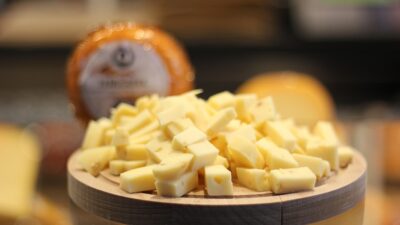Roasting is one of the most versatile cooking techniques, perfect for enhancing the flavors of a variety of ingredients. Whether you’re preparing vegetables, meats, or even fruits, mastering the art of roasting can elevate your culinary skills and add depth to your meals. Here’s a comprehensive guide for home chefs looking to perfect their roasting technique.
Understanding the Roasting Process
Roasting involves cooking food evenly in an oven, using dry heat. The process typically occurs at high temperatures, often between 375°F to 450°F (190°C to 230°C). This method promotes browning, caramelization, and flavor development, thanks to the Maillard reaction that occurs at higher temperatures.
Benefits of Roasting
- Enhanced Flavor: Roasting caramelizes the natural sugars in foods, providing a rich, complex flavor.
- Healthier Cooking: Compared to frying, roasting requires little to no added fat, making it a healthier option.
- Versatility: Almost any ingredient can be roasted, from proteins to vegetables and fruits.
- Hands-off Cooking: After the initial prep, much of the cooking time requires minimal attention, allowing you to focus on other tasks.
Essential Techniques for Successful Roasting
1. Choosing the Right Ingredients
- Protein: Cuts with a bit of fat, like chicken thighs, pork shoulder, or beef chuck, tend to retain moisture and flavor better than lean cuts.
- Vegetables: Hardy vegetables like root vegetables (carrots, potatoes, onions), and cruciferous veggies (broccoli, cauliflower) are excellent choices for roasting.
- Fruits: Apples, pears, and stone fruits can be roasted to enhance their sweetness.
2. Preparing Your Ingredients
- Cut Uniformly: Ensure even cooking by cutting vegetables and meats into similar sizes.
- Dry Ingredients: Pat meats and vegetables dry with paper towels before seasoning. Moisture can hinder browning.
- Season Generously: Use salt, pepper, and your favorite herbs and spices. For meats, allow for a rub or marinade to penetrate for deeper flavor.
3. Choosing the Right Cooking Vessel
- Baking Sheets: Ideal for vegetables; choose rimmed ones to catch drippings.
- Roasting Pans: Best for larger cuts of meat or when cooking multiple items.
- Cast Iron Skillets: Excellent for small roasts or for achieving a good sear, especially with chicken.
4. Oven Temperature and Timing
- Preheat Your Oven: Always preheat your oven to ensure even cooking.
- Use an Oven Thermometer: Ensure your oven’s temperature is accurate.
- Adjust Times Based on Size: General rule of thumb: cook meat at 20 minutes per pound. Vegetables generally take 20-30 minutes, depending on size.
5. Using Convection vs. Conventional Ovens
- Convection Ovens: Circulate hot air, resulting in quicker cooking times and improved browning.
- Conventional Ovens: Work well too but may require longer cooking times.
6. Techniques for Optimal Browning
- Don’t Overcrowd: Give ingredients room to breathe. Too snug on the pan can trap steam.
- Flip and Stir: For even browning, turn vegetables halfway through the cooking time, and rest large cuts of meat at the halfway mark.
- Baste When Appropriate: Basting meats can enhance flavor and moisture, particularly for larger cuts.
7. Checking for Doneness
- Use a Meat Thermometer: This ensures you don’t overcook. Internal temperatures vary per protein; chicken should reach 165°F (74°C), while beef is medium-rare at 135°F (57°C).
- Visual Cues for Vegetables: Look for caramelization and tenderness as indicators.
A Few Delicious Roasting Recipes to Try
-
Roasted Chicken with Herbs: Season a whole chicken generously with herbs and butter, roast until golden brown and cooked through.
-
Mediterranean Roasted Vegetables: Toss zucchini, bell peppers, and cherry tomatoes with olive oil, garlic, and your favorite herbs. Roast until caramelized.
- Honey-Roasted Carrots: Drizzle baby carrots with honey and a sprinkle of sea salt, roast until tender and slightly caramelized.
Conclusion
Roasting is a fundamental technique that every home chef should master. With the right ingredients, preparation, and techniques, you can turn simple foods into flavorful, satisfying meals. Practice these techniques regularly, and soon you’ll find that roasting becomes a go-to method in your kitchen repertoire. Happy roasting!



